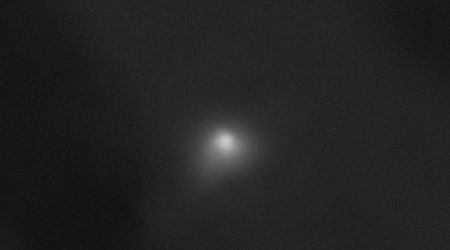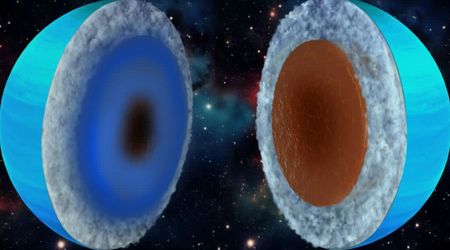Scientists created largest dataset of Type Ia supernovae, discovered that dark energy might be evolving over time

New research utilizing the most extensive dataset of Type Ia supernovae ever compiled suggests that dark energy, the mysterious force behind the universe's accelerating expansion, may not be constant and is potentially evolving over time. If confirmed, this finding would represent a significant departure from Albert Einstein's long-held understanding of the cosmological constant. The groundbreaking analysis, published recently in The Astrophysical Journal, was conducted by the international Supernova Cosmology Project (SCP), spearheaded by the Department of Energy's Lawrence Berkeley National Laboratory (Berkeley Lab), as per Berkeley Lab.
Researchers from the Supernova Cosmology Project created the largest-ever dataset of Type Ia supernovae. Their analysis hints that #DarkEnergy might change over time. Details: https://t.co/53QDWwPacf#cosmology #space @lbnlphysics pic.twitter.com/h5twUijNvp
— Berkeley Lab (@BerkeleyLab) July 22, 2025
The journey to this discovery began in 1998, when observations of Type Ia supernova, the spectacular demise of specific white dwarf stars, revealed the universe was expanding at an accelerating rate, not slowing down as expected. This led to the concept of dark energy, a discovery that earned a Nobel Prize. Since then, over 2,000 Type Ia supernovae have been documented across numerous experiments. However, inconsistencies in data collection methods have made direct comparisons challenging, akin to "comparing apples and oranges." To overcome this, scientists at SCP painstakingly unified these disparate observations into Union3, the largest standardized Type Ia supernova dataset to date.

The Union3 analysis provides compelling, though not yet conclusive, evidence that dark energy's strength might be diminishing over cosmic time. This intriguing hint is further bolstered by independent analyses from the Dark Energy Spectroscopic Instrument (DESI) and a partially independent supernova analysis, which includes data from the DOE-led Dark Energy Survey. The convergence of these separate lines of inquiry has piqued the interest of the scientific community.

“I don’t think anyone is jumping up and down getting overly excited yet, but that’s because we scientists are suppressing any premature elation since we know that this could go away once we get even better data,” said Saul Perlmutter, a Berkeley Lab scientist, UC Berkeley professor, and co-author of the paper, who shared the 2011 Nobel Prize for the discovery of dark energy. "We’re finally starting to reach levels of precision where things become interesting and you can begin to differentiate between the different theories of dark energy.”
This prevailing cosmological model, Lambda CDM, posits that dark energy remains constant. However, the new findings suggest alternative models, where dark energy's strength can fluctuate, might better explain observed phenomena. Such a shift would have profound implications for the universe's ultimate destiny. David Rubin, first author of the Union3 paper and an associate professor at the University of Hawai’i at Mānoa, explains that dark energy constitutes nearly 70% of the universe and drives its expansion. He further adds, “Does the universe expand forever, or eventually stall, or even start contracting again? It depends on this balance between dark energy and matter. We want to find out which wins, and we want to understand this underlying piece of our universe.”

To achieve the unprecedented standardization of 2,087 supernovae within Union3, researchers employed a sophisticated statistical method known as a Bayesian Hierarchical Model. This approach allows for a more accurate accounting of uncertainties, incorporating factors that are not precisely known but have defined constraints— such as potential drifts in telescope filters over time. This enhanced analytical framework is poised to integrate hundreds of thousands of additional supernovae expected from upcoming observatories like the NSF/DOE's Vera C. Rubin Observatory and NASA's Nancy Grace Roman Space Telescope in the coming decade, as mentioned on Berkeley Lab's official site.

Furthermore, these supernova studies will be combined with complementary investigations into dark energy, such as those measuring how galaxies cluster through baryon acoustic oscillations (BAO), performed by DESI. “BAO can look further back in time to when dark energy played less of a role in the universe, and supernovae are particularly precise in the more recent universe,” Perlmutter said. “The two techniques are getting good enough that we can really start saying things about the dark energy models. We’ve been waiting to reach this point for a long time.” This collaborative effort, particularly within Berkeley Lab, highlights the crucial role national laboratories play in fostering scientific breakthroughs by uniting diverse research approaches to unravel fundamental cosmic mysteries.









